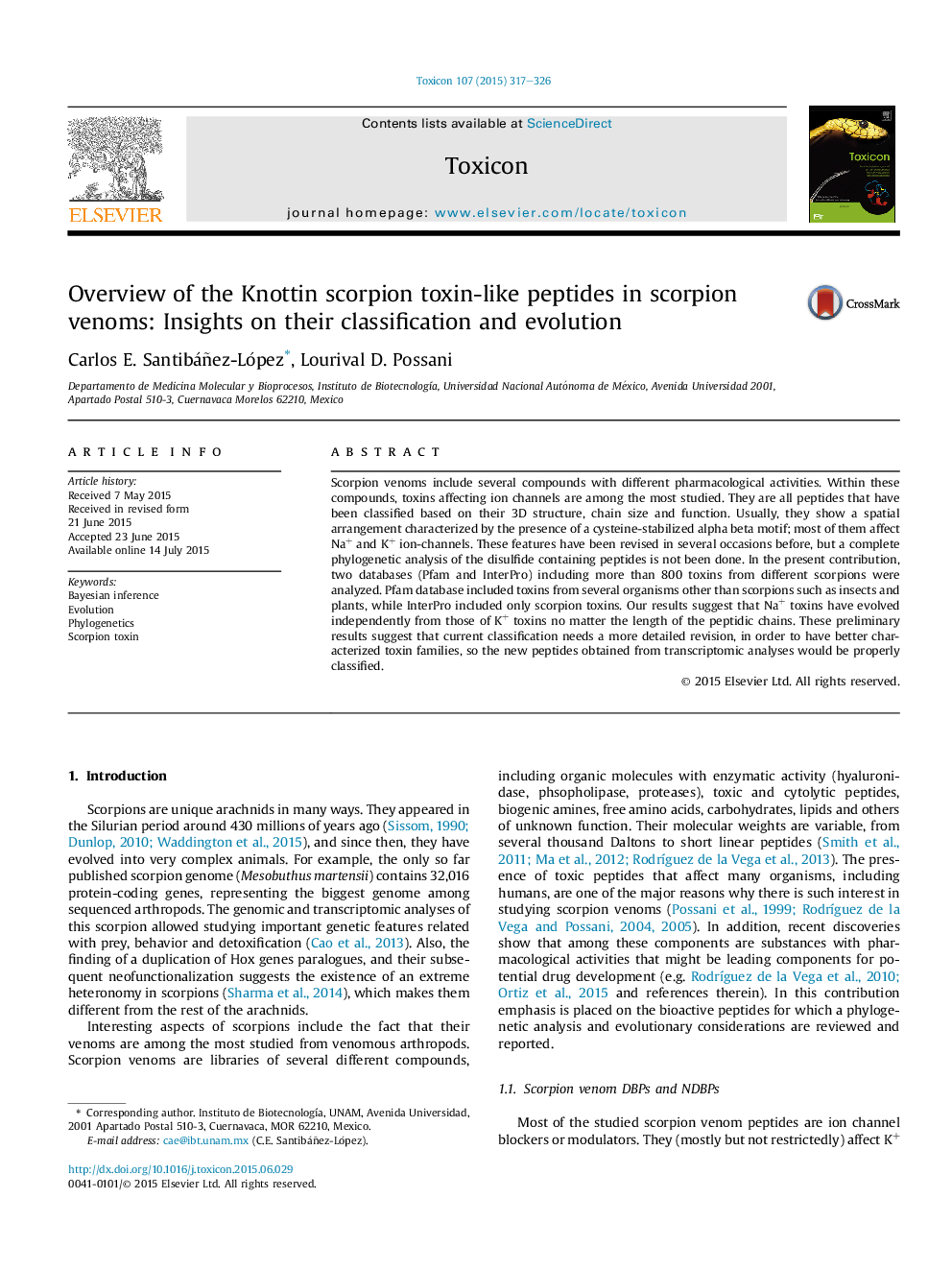| کد مقاله | کد نشریه | سال انتشار | مقاله انگلیسی | نسخه تمام متن |
|---|---|---|---|---|
| 2064294 | 1076833 | 2015 | 10 صفحه PDF | دانلود رایگان |
• Commentaries on the current status of Knottin scorpion toxin-like peptides are described.
• Pfam and Interpro data banks were used for this analysis.
• Sodium channel toxins have evolved independently from potassium toxins.
• A more adequate classification of peptides obtained by transcriptomic analysis of scorpion venom glands is necessary.
Scorpion venoms include several compounds with different pharmacological activities. Within these compounds, toxins affecting ion channels are among the most studied. They are all peptides that have been classified based on their 3D structure, chain size and function. Usually, they show a spatial arrangement characterized by the presence of a cysteine-stabilized alpha beta motif; most of them affect Na+ and K+ ion-channels. These features have been revised in several occasions before, but a complete phylogenetic analysis of the disulfide containing peptides is not been done. In the present contribution, two databases (Pfam and InterPro) including more than 800 toxins from different scorpions were analyzed. Pfam database included toxins from several organisms other than scorpions such as insects and plants, while InterPro included only scorpion toxins. Our results suggest that Na+ toxins have evolved independently from those of K+ toxins no matter the length of the peptidic chains. These preliminary results suggest that current classification needs a more detailed revision, in order to have better characterized toxin families, so the new peptides obtained from transcriptomic analyses would be properly classified.
Journal: Toxicon - Volume 107, Part B, 1 December 2015, Pages 317–326
